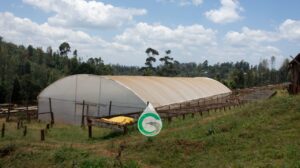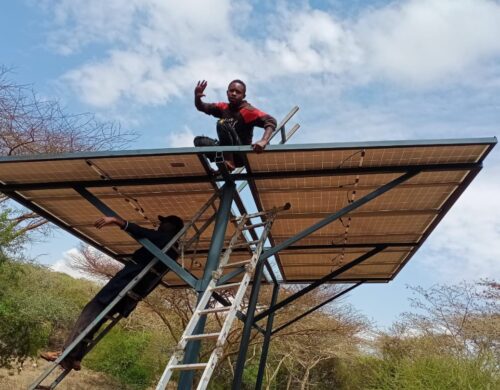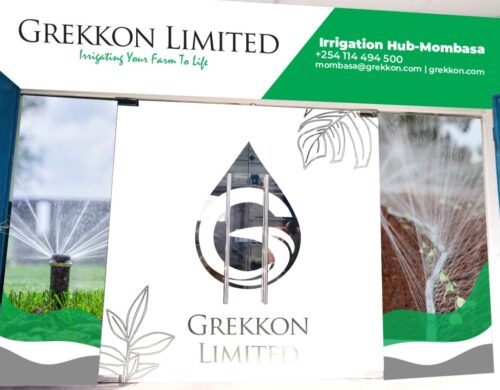Solar Dryers For Coffee In Kenya
Solar dryers for coffee in Kenya by Grekkon Limited improve the drying efficiency of harvested coffee cherry. In Kenya, harvested cherry is largely manually open dried which takes 10 – 14 days depending on the location and the prevailing temperatures. Open coffee drying is done on wooden raised table structures with a wire mesh bed laid out where the coffee cherry is spread thinly. The coffee cherry is dried by direct solar radiation and wind movement
Cost of solar dryers for coffee in Kenya
The overall cost of a solar dryer depends on the size. The average price of a large solar dryer for coffee in Kenya is Kes 1,200/M square
Challenges of open coffee drying
- it is labour intensive. This is needed to turn it over every 45 minutes to 1 hour on the bed to ensure eveness of drying, covering it in the evening or on rainy days with a polythene cover to prevent moisture entry. This increases the cost of coffee erries drying
- quality degradation as a result of moisture entry, dirt, elements of nature, and other contaminants
- it requires lots of space because the beds cannot be designed in a storeyed manner
- none uniformity of drying because it is turned over by hand on the raised drying beds

Open drying of coffee cherries in a coffee factory in western Kenya
The key advantage of open sun drying of coffee is that it is cheap, and has zero CO2 emissions
The coffee is dried from 60% to 10% – 11% moisture level. There are six stages in cofee drying
1) Skin drying. Moisture 55-45%.
2) White Stage drying. Moisture 44-33%.
3) Soft Black stage. Moisture 32-22%.
4) Medium Black Stage. Moisture 21-16%
5) Hard Black Stage. Moisture 15-12%
6) Fully dry coffee and conditioning. 11-10%
Coffee drying is a post-harvest handling process where the coffee quality is preserved instead of improving it. Different temperature limits are allowed for different coffee processing methods. Moisture level are checked to prevent moulding on the drying coffee
Solar dryers for coffee in Kenya by Grekkon Limited provide a low cost, efficient, zero CO2 emissions, and a clean way to dry cofee cherry. The use of solar dryers mitigates against the challenges faced under open sun drying.
How does a solar dryer for coffee work?
1. Air in the dryer in contact with the coffee is heated through solar radiation
2. Moisture in the coffee beans rises and is expelled through a ventilation
The temperature in the coffee solar dryer is on or about double that of the ambient temperature
Benefts of a solar dryer for coffee
- the coffee beans are not tuned over manually to achieve eveness of drying. This cuts out the huge labor cost coffee factories incur during coffee drying. Eveness of drying is well achieved as hot air dries every bean uniformly
- there is no external mositure entry especially from rain. This removes any occurence of moulding or mildew
- coffee dries at half the time or less that it would take under direct sun drying. This reduced drying time saves on operational costs
- there are no external contaminants

The exterior of a solar dryer built in a coffee factory by Grekkon Limited
- the polythene paper cover used has UV block treatment which preserves the quality of the coffee bean. It also has anti-drip attributes, so that dew does not form on it, then drop on the coffee
- space is eficiently used because the drying racks are stacked up over each other, unlike in open sun drying where each coffee cherry must make contact with the sun’s rays to dry
- in areas where coffee theft in factories is rampant, the solar dryer can be locked to prevent entry. This is not possible under open sun drying
- drying goes on even in hazy, cloudy or rainy conditions. Coffee is thus dried anytime of the year, creating drying efficiencies for the coffee factory
Demerits of a dryer for coffee
- it is expensive to isntall
- the polythene cover has to be changed every 3 -4 years when the UV block treatment has worn off
- it is uncomfortable to work in during the day as the internal temperature is high
- where care is not taken, over-drying of coffee may happen, which reduces its quality and its subsequent market price. A moisturemeter should always be used in the drying process to prevent this
- it requires maintainance, such as replacing the UV block treated polythene sheet every 3 years, when the UV block treatment degrades

A coffee solar dryer working principle
A conventional coffee solar dryer can be enhanced with solar module powered extraction, and exhaust fans, which converts it to a hybrid coffee solar dryer. This will further improve on the drying time as moisture is extracted faster. However, due to the large size of the unit, it is an expensive undertaking. It is largely used in smaller fish, herbs, spices,vegetable and fruit solar dryers
How to install solar dryers for coffee
- create raised tables from timber or galvanised steel not more than 1M in width. The length is as much as can be done. These tables can be storeyed upto 3 levels with vertical gaps of 0.75M – 1M between the levels. The horizontal distance from a table to another is 0.5M
- lay a food grade wire mesh over the tables to hold the coffee. A shade net or insect net can be used. The reason a perforated membrane is laid is to allow for free drying air movement on the beans
- construct the galvanised steel framework over these tables to amaximum mid height of 5M
- lay the greenhouse polythene paper over the steel frame
- place an insect net in the air entry and exit points. An insect net prevents entry of insect pests

A 2 level table bed coffee dryer by Grekkon Limited in Kagumoini area, Nyeri county
Grekkon Limited provides training on proper coffee drying in a solar dryer, and also on the maintainance and managemnt of the solar drying unit after installation to coffee societies in Kenya
Related Posts

Solar Dryers For Fruits And Vegetables
Grekkon Limited's hybrid solar dryers for fruits and vegetables in Kenya are designed to dry faster than the conventional or natural solar...

Irrigation Company in Mombasa
In commemoration of our 5 years of serving farmers, Grekkon Limited has a new irrigation company in Mombasa. Grekkon Limited - Irrigation...
